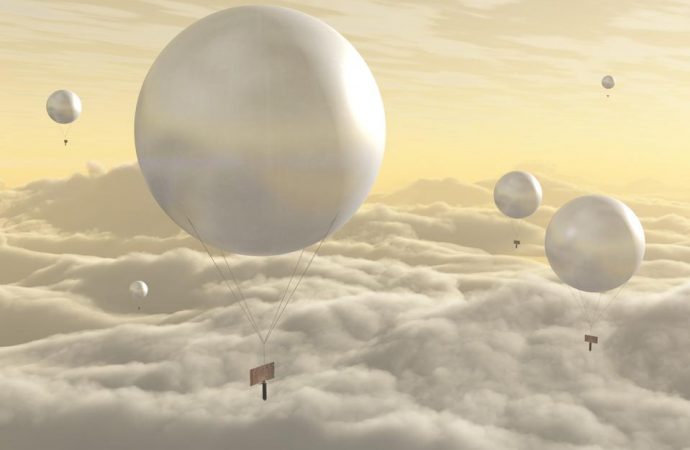Two researchers advocate sending a quick mission to Venus to try and quell debate over whether our sister planet’s middle atmosphere does in fact harbor some sort of microbial life.
Source: Forbes.com
To their credit, instead of standing around grinding their teeth over the issue, Andreas Hein and Manasvi Lingam, have already set forth a new balloon mission proposal specifically geared toward confirming the detection of phosphine (PH3) in Venus’ atmosphere. If funded, they say their mission could launch by 2022.
Their proposal, which is being submitted to The Astrophysical Journal Letters, comes on the heels of this month’s earlier controversy over the tentative detection of phosphine in Venus’ atmosphere. Under certain circumstances, phosphine, a flammable, toxic gas that can signal the presence of biology.
These balloon-based probes would be slowed down by a parachute, after which the balloons would be deployed in the cloud decks, Lingam, the paper’s second author and an astrobiologist at the Florida Institute of Technology, told me. The balloons would float in the cloud layer where phosphine has been detected and life has been theorized to exist, and the scientific instruments would operate and gather data, he says. Recommended For You
Once they hit the atmosphere, the Balloons inflate, similar to airbags, Andreas Hein, an Assistant Professor of aerospace engineering at Paris-Saclay University in France, told me. They then would collect aerosols and dust, which are then analyzed via a microscope and mass spectrometer, he says.
The balloons would probe the Venus atmosphere at a height of 50-60 km, where conditions are similar to those on Earth in terms of temperature and pressure, says Hein. This is about five times the height where airplanes fly today, he says. Microbes might be able to survive under these conditions, free-floating or on aerosol and dust particles, he notes.
Venus’ surface has long been known to be a carbon-dioxide dominated hellhole, with surface pressures 95 times that of Earth and surface temperatures hot enough to melt lead. In contrast, Venus’ middle atmosphere has been touted by a few researchers as potentially having clement temperatures and earth-like pressures. This recent putative detection of phosphine in Venus’ atmosphere has only fueled such speculation.
The idea is that Venus’ thick cloud cover may foster an ideal incubator for life. In theory, such cloud cover could provide protection from high-energy particles and radiation while still offering microbial life energy from the sun and in situ atmospheric nutrients, the authors note.
The life-detection mission we conceived would deploy microscopes to look for cell-like morphologies at micron scales and cameras to search for macroscopic markers of life, says lingam. The dust and aerosol particles in the atmosphere would be collected on a petri dish or collection plate and the microscope would scan these particles to search for motility indicative of biology, he says.
The balloon spacecraft would then send their data to Earth using a standard radio antenna, for example, the one used for CubeSats which were launched to Mars, says Hein.
But how might this current pandemic affect such ambitious plans?
Despite Covid, work on space projects is far from having stalled, says Hein. I think this is even possible under the current circumstances, he says.
The idea is that the balloon-bearing Venus spacecraft could be built and launched within the next two to three years with a budget of less than $20 million or less. By aerospace standards, that’s dirt cheap. But Hein and Lingam insist that by using existing, off-the shelf-tech with a projected spacecraft mass of no more than 50 kg., such a mission could easily be within the funding reach of private institutions or even magnanimous space-advocates.
As for when it might arrive?
If launched in early 2022, the spacecraft would arrive about six months later, says Lingam.
And if it confirms evidence for life?
There would obviously be a genuine need to send a more sophisticated mission to the Venusian atmosphere that is equipped with a larger and more versatile payload, says Lingam. One that can search for a wider spectrum of biosignatures, he says.
Source: Forbes.com

































Leave a Comment
You must be logged in to post a comment.